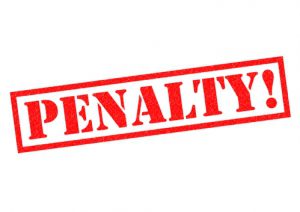What are qualifying earnings for Auto Enrolment?
In a nutshell qualifying earnings are the minimum contribution requirement for an auto enrolment scheme and is based on a band of earnings called qualifying earnings (QEs). This band is currently between £5,876 and £45,000 for 2017/18 and they’re expected to change each year.
We’ve based this article on our current understanding of the relevant legislation and regulations, which might change in the future.
QEs in practice – A basic example
Employer A provides a car allowance to workers based on their grade.
This benefit is included in the contract of employment as part of workers’ salaries. For that reason, the allowance must be included in QEs.
Employer B provides a car allowance to workers who have to travel extensively as part of their role.
As this is a business expense rather than part of the benefits package, it’s not included in the contract of employment. For that reason, the allowance won’t be included in QEs.
So what payment types should be treated as qualifying earnings:
The list of what is and isn’t a qualifying earning is as long as your arm due to the varying list of names employers give to various payment types, whatever the payment is called, if it could be categorised as one of the following, it is a qualifying earning:
- Salary
- Wages
- Overtime
- Bonuses
- Commissions
- Statutory sick pay
- Statutory maternity pay
- Ordinary or additional statutory paternity pay
- Statutory adoption pay
Qualifying earnings are these payment types.
Qualifying Earnings in practice – Basic example
John Smith has a salary of £40,000 per year and gets commission over the course of the year of £24,000
- John Smith earnings are £64,000
- John’s qualifying earnings will be: £45,000 - £5,876 = £39,124. The excess of £64,000 less £45,000 is ignored for qualifying earnings.
Now this is where it gets a little more complicated. As a business we see new clients who have been operating auto enrolment for some time, who choose which payment types they include for auto enrolment. A number of our new clients we have seen will treat John Smith's qualifying earnings as Salary only, so his qualifying earnings using the example above would be £40,000 - £5,876 = £34,124 a difference of £5,000
Auto enrolment should not be operated this way. An employer cannot limit the scope of the assessment to determine the pension contributions, yet we see this all too often. The  contributions are limited by the band of earnings known as qualifying earning as this band has a ceiling of £45,000.
contributions are limited by the band of earnings known as qualifying earning as this band has a ceiling of £45,000.
If you are using software to do the calculations for you, earning over £45,000 will be ignored, but you must still include all payment types. Failure to operate Auto Enrolment correctly, can result in a fine, so if you are not sure if you are including all payment types, check your software or speak to your payroll company/Accountant as the fine will be issued to you the employer, not the company processing your workplace pensions.
If you need help with this, please visit this page for more infromation and don't hesitate to contact us for free impartial advice and we’ll be pleased to point you in the right direction.



